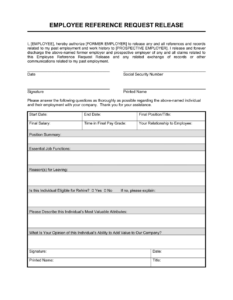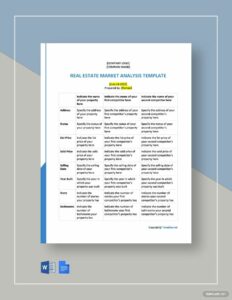Utilizing a standardized structure offers several advantages. It ensures all essential aspects of an individual’s character are addressed, reducing bias and promoting objective assessments. This structured approach also saves time and effort for both the person requesting the reference and the individual providing it. Furthermore, a well-designed format can improve the quality of responses, leading to a more comprehensive and insightful understanding of the individual in question.
Understanding the purpose and benefits of these structured formats is crucial for appreciating their role in various contexts. The following sections will delve deeper into specific use cases, explore best practices for creating and using these formats, and offer practical examples to illustrate their effectiveness.
Key Components of a Character Reference Request
Effective requests contain specific elements that ensure clarity and elicit comprehensive insights. These components guide the referee in providing relevant and valuable information about the individual in question.
1. Requestor Information: Clear identification of the individual or organization requesting the reference, including contact information, allows for efficient communication and follow-up if needed.
2. Subject Identification: Precisely identifying the individual being assessed is paramount. This typically includes their full name and any other relevant identifying information.
3. Purpose of Reference: Explaining the reason for the reference request, such as a job application or rental agreement, provides context and helps the referee tailor their response accordingly.
4. Referee’s Relationship to Subject: Understanding how the referee knows the individual being assessed adds valuable perspective to their observations and insights.
5. Specific Questions: Incorporating targeted questions focusing on relevant character traits (e.g., honesty, reliability, work ethic) facilitates more focused and informative responses.
6. Confidentiality Statement: A statement assuring the referee of the confidentiality of their feedback can encourage open and honest responses.
7. Deadline and Submission Instructions: Providing a clear deadline and instructions for submitting the completed reference ensures timely receipt and facilitates the decision-making process.
8. Expression of Gratitude: Acknowledging the referee’s time and effort reinforces the importance of their contribution.
These elements work together to create a structured and effective request, maximizing the value of the insights received while respecting the referee’s time and contribution.
How to Create a Character Reference Request
Creating a well-structured request ensures the receipt of comprehensive and relevant information. A systematic approach facilitates the process and maximizes the value of the insights provided.
1. Define the Purpose: Clearly articulate the reason for the reference request. Specifying the context, such as a job application or tenancy agreement, helps referees tailor responses appropriately.
2. Identify Essential Character Traits: Determine the specific qualities most relevant to the situation. Focusing on pertinent traits ensures targeted and insightful responses.
3. Draft Targeted Questions: Formulate specific questions that elicit information about the identified character traits. Open-ended questions encourage detailed responses, while closed-ended questions offer focused insights.
4. Structure the Template: Organize the request logically, including sections for requestor information, subject identification, purpose of the reference, and questions for the referee.
5. Incorporate Instructions and Deadline: Clearly state the preferred method of submission (e.g., email, postal mail) and provide a reasonable deadline for completion.
6. Include a Confidentiality Statement: Assure referees that their responses will be treated confidentially, encouraging candid and honest feedback.
7. Express Gratitude: Acknowledge the referee’s time and effort, emphasizing the importance of their contribution.
8. Review and Refine: Before distributing the request, carefully review the content for clarity, completeness, and accuracy.
A thoughtfully crafted request demonstrates professionalism and respect for the referee’s time while ensuring the acquisition of valuable insights for informed decision-making.
A well-designed framework for requesting character references offers a systematic approach to gathering essential insights about an individual’s personality, ethics, and overall suitability for a specific purpose. Understanding the components, benefits, and creation process empowers requesters to obtain comprehensive and relevant information while respecting the time and effort of those providing references. Utilizing such structured formats contributes to fairer, more informed decision-making processes in various situations, from employment and housing to legal and personal matters.
Effective use of these frameworks ultimately benefits all parties involved. It provides decision-makers with valuable information, offers individuals an opportunity to showcase their positive attributes, and streamlines the entire reference process, promoting efficiency and clarity. As such, continued emphasis on utilizing well-structured formats for soliciting character references represents a significant step toward promoting fairness and objectivity in evaluations across diverse contexts.


